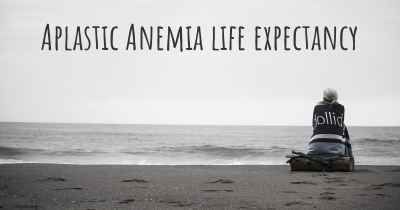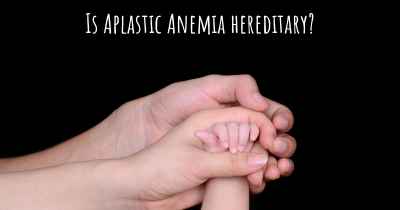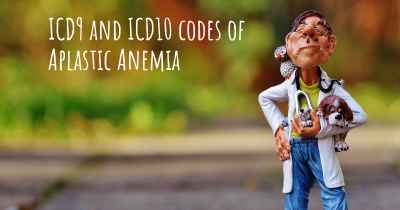Living with Aplastic Anemia. How to live with Aplastic Anemia?
Can you be happy living with Aplastic Anemia? What do you have to do to be happy with Aplastic Anemia? Living with Aplastic Anemia can be difficult, but you have to fight to try to be happy. Have a look at things that other people have done to be happy with Aplastic Anemia

Living with Aplastic Anemia
Aplastic anemia is a rare and serious condition that affects the bone marrow, leading to a decrease in the production of red blood cells, white blood cells, and platelets. Living with aplastic anemia can be challenging, but with proper management and support, it is possible to lead a fulfilling life. Here are some important aspects to consider:
1. Medical Care and Treatment
Seeking regular medical care is crucial when living with aplastic anemia. It is important to work closely with a hematologist or a specialist in blood disorders who can monitor your condition and provide appropriate treatment. Treatment options may include:
- Blood transfusions: These can help increase your red blood cell count and improve symptoms of anemia.
- Immunosuppressive therapy: Medications can be used to suppress the immune system and prevent it from attacking the bone marrow.
- Bone marrow/stem cell transplant: In severe cases, a transplant may be recommended to replace the damaged bone marrow with healthy cells.
2. Managing Symptoms
Aplastic anemia can cause various symptoms, such as fatigue, shortness of breath, frequent infections, and easy bruising or bleeding. To manage these symptoms:
- Take care of your body: Get plenty of rest, eat a balanced diet, and engage in regular exercise to maintain overall health and combat fatigue.
- Practice good hygiene: Wash your hands frequently, avoid crowded places during flu season, and stay up to date with vaccinations to reduce the risk of infections.
- Be cautious with physical activities: Avoid contact sports or activities that may increase the risk of injury or bleeding. Consult your doctor for guidance on what activities are safe for you.
3. Emotional Support
Living with a chronic illness like aplastic anemia can be emotionally challenging. It is important to seek emotional support from loved ones, friends, or support groups. Consider the following:
- Communicate openly: Share your feelings and concerns with your loved ones, as they can provide comfort and understanding.
- Join support groups: Connecting with others who are going through similar experiences can be invaluable. Support groups can provide a safe space to share experiences, gain advice, and find emotional support.
- Consider therapy: If needed, seek professional help from a therapist or counselor who specializes in chronic illness or coping with medical conditions.
4. Lifestyle Modifications
Adopting certain lifestyle modifications can help improve your overall well-being:
- Quit smoking: Smoking can worsen aplastic anemia and increase the risk of complications. If you smoke, consider quitting.
- Eat a healthy diet: Consume a variety of nutrient-rich foods, including fruits, vegetables, whole grains, and lean proteins, to support your immune system and overall health.
- Stay hydrated: Drink plenty of fluids, especially water, to help maintain healthy blood volume and prevent dehydration.
- Manage stress: Find healthy ways to cope with stress, such as practicing relaxation techniques, engaging in hobbies, or pursuing activities that bring you joy.
5. Regular Check-ups and Monitoring
Regular check-ups and monitoring are essential to track your condition and make any necessary adjustments to your treatment plan. Be sure to:
- Attend medical appointments: Follow up with your hematologist as recommended and discuss any concerns or changes in your symptoms.
- Monitor blood counts: Regular blood tests will help evaluate your blood cell levels and determine if any interventions are needed.
- Stay informed: Educate yourself about aplastic anemia, its symptoms, and potential complications. This knowledge will empower you to actively participate in your care.
Living with aplastic anemia requires ongoing management, but with the right medical care, support, and lifestyle adjustments, it is possible to maintain a good quality of life. Remember to always consult your healthcare provider for personalized advice and guidance.
Posted Mar 17, 2017 by Jacqueline 1152
Posted Mar 17, 2017 by John 2150








